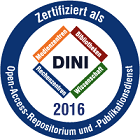Maruccia, Riccardo: The role of the purinergic receptor P2Y12 in Alzheimer's disease. - Bonn, 2025. - Dissertation, Rheinische Friedrich-Wilhelms-Universität Bonn.
Online-Ausgabe in bonndoc: https://nbn-resolving.org/urn:nbn:de:hbz:5-81812
Online-Ausgabe in bonndoc: https://nbn-resolving.org/urn:nbn:de:hbz:5-81812
@phdthesis{handle:20.500.11811/12954,
urn: https://nbn-resolving.org/urn:nbn:de:hbz:5-81812,
doi: https://doi.org/10.48565/bonndoc-532,
author = {{Riccardo Maruccia}},
title = {The role of the purinergic receptor P2Y12 in Alzheimer's disease},
school = {Rheinische Friedrich-Wilhelms-Universität Bonn},
year = 2025,
month = mar,
note = {Alzheimer’s disease (AD), the most common cause of dementia, shows a significant rise in prevalence due to increased global life expectancy and represents a major public health, social, and economic burden. Microglia, the resident immune cells of the CNS, have recently moved into prime focus of AD research due to the discovery of risk loci and genes associated with immune mechanisms in microglia. Extracellular ATP or ADP activates the purinergic receptor P2Y12, which is highly expressed in microglia and is critical for several microglial functions (chemotaxis, blood-brain barrier closure, synaptic plasticity, interaction with neurons and phagocytosis). As many patients with cardiovascular diseases worldwide are prescribed anticoagulant P2Y12R antagonists (e.g clopidogrel) on a daily or chronic basis and blood brain barrier impairment is known to preceed AD development, this thesis investigates the role of the P2Y12 receptor in AD, microglial barrier formation around Aβ plaques and its impact on plaque pathology. Impaired microglial phagocytic clearance of Aβ and impaired plaque barrier formation upon P2Y12 dysfunction may affect AD progression. To conduct the study, 3D reconstructed confocal images of brain tissue from female transgenic APP/PS1 mice with and without genetic deletion of the P2Y12 receptor were digitally analyzed. In addition, whole-slide imaging and super-resolution microscopy were used to quantify astrocytosis, plaque or dystrophic neurite load and synaptic density. Our results suggest that P2Y12R may influence the microglia-plaque interaction. Not only a reduction of microglia-plaque coverage, particularly in the hippocampus, was detected in the absence of the P2Y12 receptor, but also an increase in astrocyte reactivity and a reduction in the area of dystrophic neurites near the plaques in the cortex. This may represent a synergistic or compensatory effect on astroglia in neuroprotection. However, significant changes in plaque-associated microglia ramification or cell volume, total plaque burden, plaque morphology and synaptic density were not observed. Experimental limitations require cautious interpretation related to the question if P2Y12 activity may have beneficial or detrimental effects on the AD progression. Further investigation with larger sample size, different mouse models and advanced techniques will be needed to elucidate implications in the field of neuroprotection and to develop new therapeutic strategies in early stages of AD.},
url = {https://hdl.handle.net/20.500.11811/12954}
}
urn: https://nbn-resolving.org/urn:nbn:de:hbz:5-81812,
doi: https://doi.org/10.48565/bonndoc-532,
author = {{Riccardo Maruccia}},
title = {The role of the purinergic receptor P2Y12 in Alzheimer's disease},
school = {Rheinische Friedrich-Wilhelms-Universität Bonn},
year = 2025,
month = mar,
note = {Alzheimer’s disease (AD), the most common cause of dementia, shows a significant rise in prevalence due to increased global life expectancy and represents a major public health, social, and economic burden. Microglia, the resident immune cells of the CNS, have recently moved into prime focus of AD research due to the discovery of risk loci and genes associated with immune mechanisms in microglia. Extracellular ATP or ADP activates the purinergic receptor P2Y12, which is highly expressed in microglia and is critical for several microglial functions (chemotaxis, blood-brain barrier closure, synaptic plasticity, interaction with neurons and phagocytosis). As many patients with cardiovascular diseases worldwide are prescribed anticoagulant P2Y12R antagonists (e.g clopidogrel) on a daily or chronic basis and blood brain barrier impairment is known to preceed AD development, this thesis investigates the role of the P2Y12 receptor in AD, microglial barrier formation around Aβ plaques and its impact on plaque pathology. Impaired microglial phagocytic clearance of Aβ and impaired plaque barrier formation upon P2Y12 dysfunction may affect AD progression. To conduct the study, 3D reconstructed confocal images of brain tissue from female transgenic APP/PS1 mice with and without genetic deletion of the P2Y12 receptor were digitally analyzed. In addition, whole-slide imaging and super-resolution microscopy were used to quantify astrocytosis, plaque or dystrophic neurite load and synaptic density. Our results suggest that P2Y12R may influence the microglia-plaque interaction. Not only a reduction of microglia-plaque coverage, particularly in the hippocampus, was detected in the absence of the P2Y12 receptor, but also an increase in astrocyte reactivity and a reduction in the area of dystrophic neurites near the plaques in the cortex. This may represent a synergistic or compensatory effect on astroglia in neuroprotection. However, significant changes in plaque-associated microglia ramification or cell volume, total plaque burden, plaque morphology and synaptic density were not observed. Experimental limitations require cautious interpretation related to the question if P2Y12 activity may have beneficial or detrimental effects on the AD progression. Further investigation with larger sample size, different mouse models and advanced techniques will be needed to elucidate implications in the field of neuroprotection and to develop new therapeutic strategies in early stages of AD.},
url = {https://hdl.handle.net/20.500.11811/12954}
}






